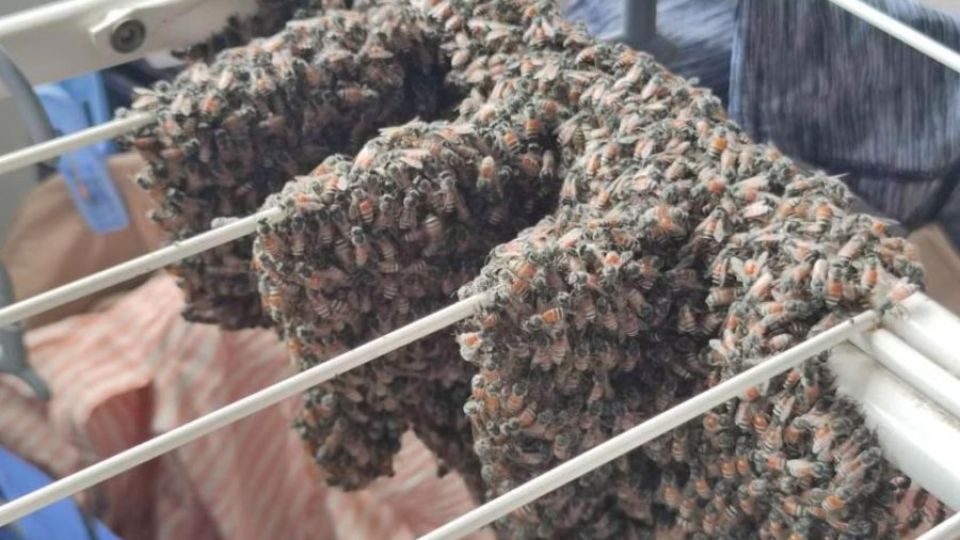February 2, 2024
SINGAPORE – When Ms Gillian Yap returned home from her weekend trip to Malaysia, she was greeted with a swarm of unwanted visitors.
On her laundry rack in her flat in Cantonment Close, a multitude of bees had built an E-shaped nest.
“I was startled – there were thousands of bees. This is the first time I have encountered such a situation and do not know when they first flew in,” said the tax consultant, 29, who discovered the nest on the morning of Jan 29.
“I was very scared that the clothes rack would fall over and the bees would be triggered.”
She called Tanjong Pagar Town Council, which arranged for pest controllers to remove the hive in about two hours.
Run-ins with beehives in flats are on the rise. Three pest control companies told The Straits Times they have seen an increase of between 10 per cent and 50 per cent of such cases in January compared with other months.
The increase is commonly seen at the start of the year, when the weather gets warmer, they added.
In most cases, pest controllers exterminate the bees using methods such as spraying or fogging.
Bees commonly relocate towards the end of a rainy season, said beekeepers and conservation groups.
“Many bees are starting to swarm and make new nests. They are preparing for spring when it rains less as there are more chances for foraging,” said The Sundowner Bee Rescue founder and director Clarence Chua.
The bees on Ms Yap’s clothes rack were red dwarf honey bees (Apis florea), one of the two types of dwarf bees found in Singapore.
Dwarf bees are commonly found on plants along the corridors of Housing Board flats and on balconies of condominiums, said Mr John Chong, founder and beekeeper at Bee Amazed Garden.
“Such bees like to form their honeycombs over a thin horizontal branch or a railing.”
The clothes rack was most likely near flowers, said Mr Chua.
“The swarm was either resting before choosing a permanent home, or thought the clothes rack was a good place to build a new home,” he added.
The public is advised to call their town council, or pest control or bee relocation companies, should they find themselves in a muddle similar to Ms Yap’s.
“Home owners should try to get into a safe area by perhaps closing the doors, and engage professional help,” said Eminent Pest Control director Ian Wong.
One should remain calm as bees typically do not sting humans unless they are provoked, said 1800NoPests director Chris Gan.
“Do not attempt to remove them yourself as one can be allergic to bee venom,” he said, adding that home owners “often do not have the correct training and protective equipment”.
Conservation groups encouraged people to opt for relocation of the bees and to engage companies to take the bees back to their apiaries.
Beekeeper and conservationist Xavier Tan said: “Bees can be humanely removed without causing any safety issue. There is no need to exterminate them.”

